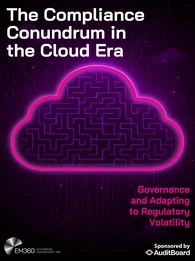
Have you ever clicked on a link, only to find a digital dead end? You have likely encountered an example of ‘link rot’. This online phenomenon occurs when links become broken, often due to changes in the linked resources.
Some believe link rot is evidence of the Dead Internet Theory. As hyperlinks become invalid or outdated, they create gaps online making it difficult to access and preserve information. As links rot and become broken, it becomes harder to navigate and discover valuable content, resulting in a less dynamic and more static internet.
This article dives deep into link rot, exploring what it is and how to prevent it from impacting your business and reputation.
What is Link Rot?
Link Rot is when hyperlinks across the internet break and stop working.
Link rot can happen for a number of reasons. Most often it is because websites can relocate or shut down, but references to them remain on other web pages. Singular pages on a website may be deleted or the entire website may go offline.
Tech changes including updates to software, hardware, or internet protocols, can lead to link rot, this is usually through a change in a website's domain name or the introduction of a new web standard.
Website updates can also contribute to link rot. Changes to website structures, content, or URLs can result in broken links,
If the website is defunct and out of use its domain name will likely not be renewed and paid for, and thus the website becomes inaccessible.
Link rot will often lead users to an error message or a blank page. This can be frustrating for users and can also negatively impact a website's search engine ranking and credibility.
Engagement farming is a key contributor to link rot because it often involves deceptive tactics that can lead to broken links and outdated content. When content is created solely to increase metrics, it may be hastily produced, leading to errors or outdated information. These engagement farming tactics often involve frequent updates to content, which can result in changes to URLs and broken links.
Link rot can have a significant impact on the user experience. When users encounter broken links, they may become frustrated and lose interest in the content.
Broken links can also harm a website's search engine optimization. Search engines often penalize websites with a high number of broken links, which can negatively impact their ranking in search results.
How do you Avoid Link Rot?
Link rot ruins the value of online content, however there are a few easy strategies to help your business avoid it.
Firstly ensure you are linking to reputable sources such as government and educational institutions as they maintain a consistent online presence. Large, reputable organizations are also less likely to undergo significant website changes, reducing the risk of broken links.
Linking directly to the original source of information reduces the risk of broken links. Avoid relying on secondary references, as they introduce additional points of potential failure.
Permalinks are permanent URLs designed to remain unchanged, even if the content is updated or moved.
Regularly use broken link checkers to identify and fix invalid links. Periodically review your content to ensure that all links remain active and relevant.
Link rot is a significant issue that can have a negative impact on online content. By understanding the causes and consequences of link rot, and implementing strategies to prevent it, businesses and creators can help ensure the long-term accessibility and value of their work.














Comments ( 0 )